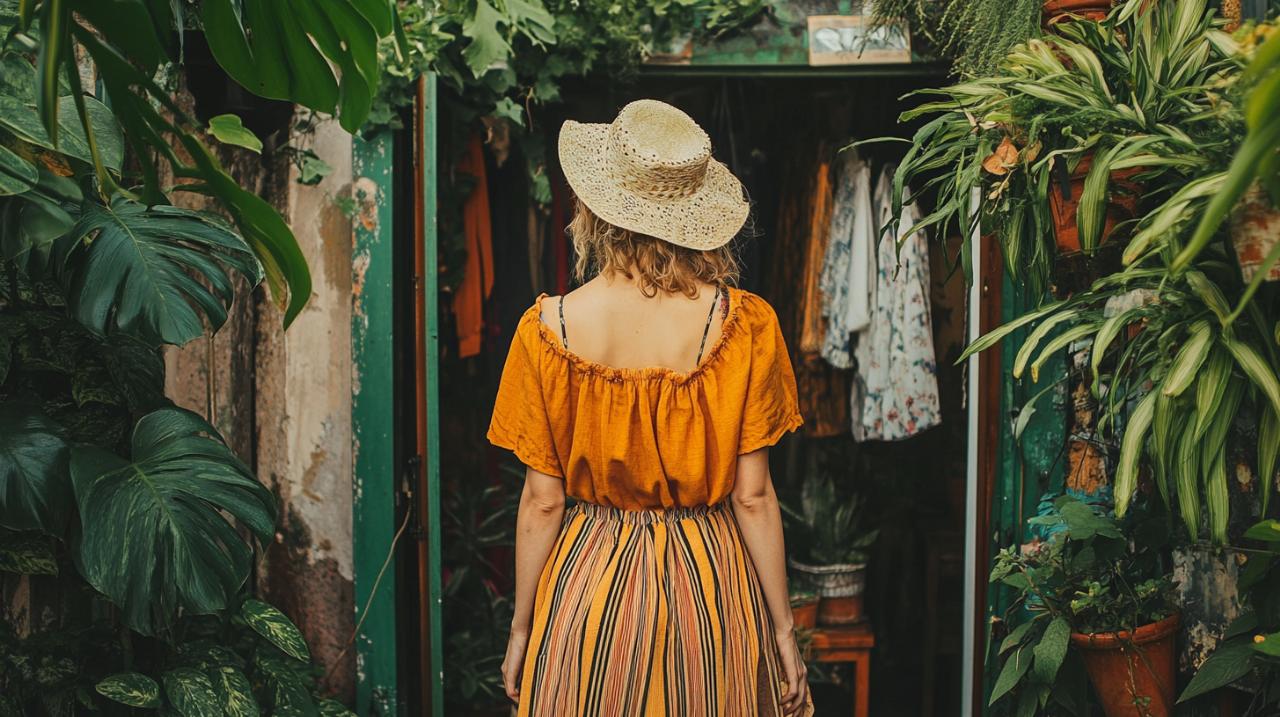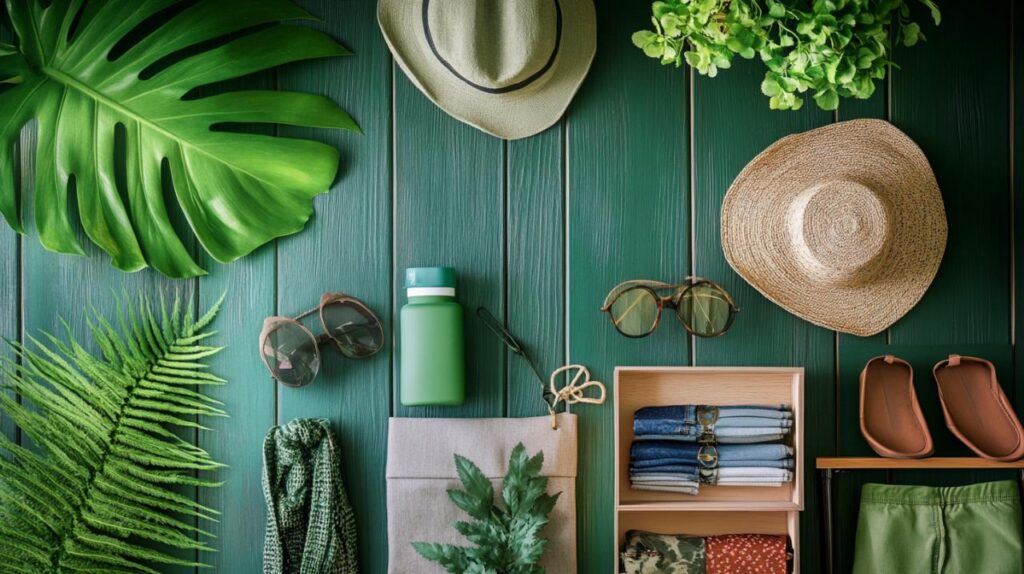The fashion world is undergoing a remarkable transformation, and at the heart of this shift lies a growing desire to embrace more mindful and planet-friendly practices. Incorporating sustainable living solutions into your wardrobe is no longer just a passing trend but rather a meaningful commitment to reducing waste and celebrating creativity. By rolling up your sleeves and getting involved in do-it-yourself fashion, you can craft unique pieces that not only reflect your personal style but also tread lightly on the environment. This approach champions slow fashion, where quality over quantity reigns supreme, and where every stitch and seam tells a story of conscious consumption and ethical production.
Making the Most of What You've Already Got
Raiding your wardrobe for hidden treasures
Before dashing off to the shops or scrolling through endless online catalogues, take a moment to sift through your existing wardrobe. You might be surprised by the hidden gems tucked away at the back of your cupboard, garments you've forgotten about or pieces that simply need a fresh perspective. Reassessing what you already own is a cornerstone of sustainable living solutions, allowing you to rediscover items that can be styled in new and exciting ways. This practice not only saves money but also helps you appreciate the versatility of your current collection, encouraging a more mindful approach to fashion consumption.
Transforming old garments into fresh pieces
Once you've unearthed those forgotten treasures, the next step is to think creatively about how they can be transformed. An old dress might become a chic skirt, or a worn jumper could be unravelled and repurposed into a cosy scarf. The beauty of DIY fashion lies in its limitless possibilities, where your imagination is the only constraint. By breathing new life into garments that might otherwise end up in landfill, you're actively participating in textile waste reduction and promoting a circular fashion mindset. This hands-on approach not only extends the life of your clothing but also allows you to develop a deeper connection with the pieces you wear.
The Art of Repurposing and Upcycling Your Clobber
Clever Ways to Give Worn Clothes a New Lease of Life
Upcycling has become a buzzword in sustainable fashion circles, and for good reason. Unlike traditional recycling, which breaks down materials to create something entirely different, upcycling transforms existing items into products of equal or greater value. This process is at the heart of upcycled fashion, where creativity meets environmental responsibility. For instance, a pair of jeans that no longer fits can be cut down into shorts, or a faded t-shirt might become a reusable shopping bag. These simple yet effective techniques demonstrate how versatile garments can be when viewed through the lens of mindful consumption and waste reduction.
Creative Techniques for Turning Scraps into Statement Items
Even the smallest offcuts and fabric remnants can find a new purpose in your DIY projects. Consider using leftover material to create patches, embellishments, or even entirely new accessories such as headbands or pocket squares. Zero-waste design principles encourage us to view every scrap as valuable, pushing the boundaries of what can be achieved with limited resources. By embracing these creative techniques, you not only reduce the amount of textile waste heading to landfill but also craft statement items that are truly one of a kind. This approach aligns perfectly with the ethos of conscious consumption, where every decision is made with care and consideration for the planet.
Mending and Caring for Your Wardrobe Staples
Essential repair skills every diy fashion enthusiast should know
Learning basic sewing techniques is an invaluable skill for anyone keen on extending the life of their clothing. Simple repairs such as replacing buttons, darning holes, or mending seams can make a world of difference, transforming a worn garment into a wearable favourite once more. These essential skills not only save you money but also contribute to wardrobe longevity, ensuring that your cherished pieces remain in circulation for years to come. Embracing the art of repair is a fundamental aspect of sustainable fashion, where the focus shifts from disposable trends to timeless clothing that stands the test of time.
Extending the Life of Your Favourite Garments Through Proper Maintenance
Beyond mending, proper care and maintenance play a crucial role in preserving the quality and appearance of your clothes. Washing garments at lower temperatures, air drying when possible, and storing items correctly can significantly extend their lifespan. These small yet impactful habits reflect a commitment to quality over quantity, a principle that lies at the heart of slow fashion. By treating your wardrobe with care, you're not only protecting your investment but also reducing the environmental impact associated with frequent replacements and the constant demand for new production.
Choosing eco-friendly materials for your diy projects

Why organic cotton and recycled fabrics matter
When embarking on DIY fashion projects, the choice of materials is just as important as the design itself. Opting for ethical materials such as organic cotton or recycled fabrics ensures that your creations are kind to both the planet and the people involved in their production. Organic cotton, grown without harmful pesticides, and recycled textiles, which give new life to existing fibres, are excellent choices for those committed to sustainable living solutions. These materials help reduce greenhouse gas emissions and minimise the strain on natural resources, making them an integral part of any eco-friendly fashion endeavour.
Sourcing Sustainable Textiles on a Budget
Finding affordable, sustainable fabrics might seem challenging at first, but with a bit of resourcefulness, it's entirely achievable. Charity shops, fabric swap events, and online marketplaces are treasure troves for eco-friendly textiles at reasonable prices. By supporting small, ethical brands and seeking out locally sourced materials, you can build a collection of fabrics that align with your values without breaking the bank. This approach not only supports fair labour practices but also fosters a sense of community and shared purpose among like-minded individuals passionate about fashion industry sustainability.
Practical Tips for Reducing Waste in Fashion DIY
Planning your projects to minimise leftover scraps
Careful planning is key to minimising waste in your DIY fashion projects. Before cutting into a piece of fabric, take the time to sketch out your design and consider how best to use the available material. This forethought can help you avoid unnecessary offcuts and ensure that every inch of fabric is put to good use. Embracing zero-waste design principles means thinking creatively about how patterns can be arranged to maximise efficiency, turning what might have been waste into an integral part of your creation. This level of attention to detail not only benefits the environment but also enhances the overall quality and thoughtfulness of your work.
Smart Storage Solutions for Fabric Odds and Sods
Even with the best planning, you'll inevitably end up with some leftover scraps. Rather than discarding these odds and ends, develop a system for storing and organising them. Clear containers, labelled boxes, or even repurposed jars can keep your fabric remnants tidy and accessible for future projects. These small pieces can be incredibly useful for patchwork, appliqué, or crafting home decor items such as pillow covers and wall hangings. By treating every scrap as a potential resource, you're embracing the principles of circular fashion and ensuring that nothing goes to waste. This mindful approach to storage and reuse is a simple yet effective way to contribute to textile waste reduction.
Getting your hands dirty: the joy of handmade fashion
Building confidence through simple diy fashion techniques
Starting your journey into DIY fashion doesn't require years of experience or a professional sewing machine. Begin with simple projects such as hemming trousers, adding patches to jeans, or turning an old t-shirt into a tote bag. These beginner-friendly techniques allow you to build confidence and develop your skills at your own pace. As you become more comfortable with basic sewing techniques and clothing customisation, you'll find yourself eager to tackle more ambitious craft projects. The satisfaction of creating something with your own hands is immensely rewarding, and it reinforces the idea that fashion can be both personal and sustainable.
Creating a Personal Style That's Kind to the Planet
One of the most exciting aspects of DIY fashion is the opportunity to develop a truly unique personal style. By crafting and customising your own garments, you're no longer bound by the homogenous offerings of fast fashion. Instead, you can curate a capsule wardrobe filled with versatile garments that reflect your individuality and values. This approach to fashion encourages you to invest in timeless clothing that can be mixed and matched, reducing the need for constant purchases and contributing to a more sustainable lifestyle. Engaging with local upcycling workshops, online communities, and social media platforms can provide endless inspiration and support as you navigate this creative journey. Ultimately, the joy of handmade fashion lies not just in the finished product but in the process itself, where every stitch is a step towards a more thoughtful and planet-friendly way of living.


